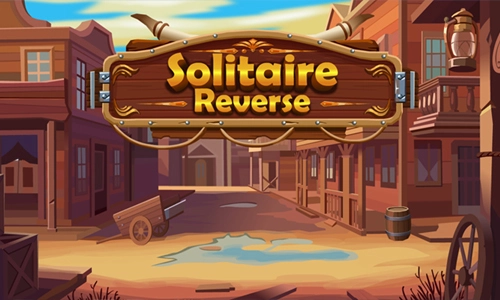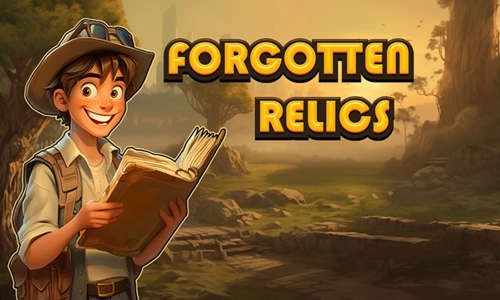Pyramid Solitaire - Ancient Rome
A Pyramid Solitaire game in Ancient Rome. Remove all cards at the top from the game by combining 2 cards to a total value of 13.
Pyramid Solitaire - Ancient Rome
Journey back to the glory days of the Roman Empire in this strategically challenging card game where mathematical precision meets imperial grandeur. Dismantle the great pyramid of cards by finding pairs that sum to 13, channeling the calculating mind of a Roman engineer to achieve victory through careful planning and numerical mastery.
How to Play
Pyramid Solitaire - Ancient Rome transports you to the marble halls of imperial Rome, where you must demonstrate the mathematical prowess that built an empire spanning three continents. Your challenge is to completely clear a pyramid of cards by strategically pairing cards whose numerical values sum to exactly 13, representing the sacred number that governed Roman architectural proportions and military formations.
The pyramid structure consists of cards arranged in overlapping rows, starting with a single card at the apex and expanding to a seven-card base. Only cards that are completely uncovered (not overlapped by any other cards) can be selected for matching. Your mathematical arsenal includes pairs like Ace (1) + Queen (12), 2 + Jack (11), 3 + 10, 4 + 9, 5 + 8, 6 + 7, while Kings (13) are removed individually as they already represent the target number.
Begin by examining the exposed cards in the pyramid and identifying immediate pairing opportunities. Click on the first card of a potential pair, then click on its complement to remove both cards simultaneously. As cards disappear, new cards become exposed, creating opportunities for additional matches. You also have access to a stock pile of reserve cards that can be cycled through to find additional pairing partners for pyramid cards.
The strategic depth emerges from the pyramid's structural dependencies. Removing certain cards will expose new options, while others may be better left in place temporarily to maintain access to trapped cards. Master Roman generals would plan several moves ahead, and successful pyramid clearance requires the same foresight and tactical thinking that conquered the ancient world.
Controls
Desktop:
- Left Click: Select a card for pairing
- Left Click (valid pair): Remove both cards when sum equals 13
- Left Click (King): Remove single King card
- Right Click: Deselect currently highlighted card
- Spacebar: Draw next card from stock pile
- U Key: Undo last move (limited uses)
Mobile & Tablet:
- Tap: Select card for pairing calculation
- Tap (complement): Complete the pair removal
- Tap (King): Remove King independently
- Double Tap: Deselect current card selection
- Swipe Right: Draw from stock pile
- Long Press: Display card values for quick reference
Game Features
- Roman Imperial Theme: Immerse yourself in authentic Roman artwork, architectural motifs, and classical design elements
- Mathematical Strategy: Develop number sense and calculation skills through engaging gameplay that rewards mental arithmetic
- Progressive Difficulty: Master increasingly complex pyramid layouts that test your strategic planning abilities
- Multiple Scoring Systems: Compete for highest scores based on speed, efficiency, and total cards cleared
- Undo System: Learn from mistakes with limited undo options that encourage thoughtful play without punishing experimentation
- Stock Pile Management: Master the art of cycling through reserve cards to find optimal pairing opportunities
- Achievement Gallery: Unlock Roman titles and honors by demonstrating mastery of various strategic objectives
- Historical Context: Learn about Roman mathematics, engineering, and the cultural significance of numerical relationships in ancient society
About the Game
Pyramid Solitaire - Ancient Rome seamlessly blends mathematical challenge with historical immersion, creating an educational gaming experience that honors both the intellectual achievements and cultural grandeur of classical civilization. The game's foundation rests on the mathematical principle of complementary numbers summing to 13, a concept that reflects the Roman fascination with numerical harmony and geometric proportion evident in their greatest architectural achievements.
The choice of 13 as the target sum carries historical significance in Roman culture, where this number appeared in various contexts from the lunar calendar to architectural proportions. Roman engineers and architects relied heavily on mathematical relationships to create their enduring monuments, and this game captures that same spirit of precise calculation and strategic planning that built the Colosseum, aqueducts, and vast road networks that connected the empire.
Each pyramid layout represents a unique tactical challenge that mirrors the problem-solving approaches used by Roman military commanders and civil engineers. The hierarchical structure of the pyramid reflects Roman society's organized, stratified nature, while the requirement to clear cards in the correct sequence parallels the methodical approach Romans took to conquest, construction, and administration.
The game's progression system introduces players to increasingly sophisticated strategic concepts, beginning with simple pattern recognition and advancing to complex multi-move planning scenarios. This educational approach reflects the Roman emphasis on practical learning and skill development, where theoretical knowledge was always balanced with hands-on application and real-world problem solving.
Tips and Tricks
- Survey Before Acting: Like a Roman general surveying the battlefield, always examine the entire pyramid before making your first move to identify the most advantageous starting pairs
- Prioritize Liberation: Focus on removing cards that will expose the maximum number of trapped cards, particularly those covering multiple cards in lower rows
- Stock Pile Timing: Cycle through stock cards strategically rather than immediately – sometimes the perfect complement appears several cards later in the sequence
- King Management: Remove Kings as soon as they become available, as they don't require partners and their removal always creates new opportunities
- Corner Strategy: Pay special attention to corner cards in the pyramid base, as they're often easier to expose and can provide crucial access to interior cards
- Count Remaining Pairs: Keep mental track of which number combinations you've already used to avoid overlooking available matches
FAQ
Q: Which card combinations sum to 13 in this game?
A: The valid pairing combinations are: Ace(1) + Queen(12), 2 + Jack(11), 3 + 10, 4 + 9, 5 + 8, 6 + 7. Kings(13) are removed individually without requiring a pair.
Q: What happens when I run out of moves in the pyramid?
A: Continue cycling through the stock pile to find cards that can pair with exposed pyramid cards. The stock pile can often be cycled multiple times, providing additional opportunities for matches.
Q: How do I know which cards are available for selection?
A: Only cards that are completely uncovered (no other cards overlapping them) can be selected. These cards will be visually distinct and responsive to clicks or taps.
Q: Is every pyramid layout guaranteed to be solvable?
A: While most layouts have potential solutions, success depends heavily on the order of cards in the stock pile and the sequence of moves you choose. Strategic thinking and sometimes a bit of luck are both important factors.
Q: What's the historical significance of the number 13 in Roman culture?
A: The number 13 held various meanings in Roman society, appearing in lunar calendar calculations, architectural proportions, and mathematical relationships that governed engineering projects and urban planning.
Q: Can I improve my mathematical skills by playing this game?
A: Absolutely! Regular play develops mental arithmetic speed, number pattern recognition, and strategic thinking skills while providing an engaging way to practice addition and numerical relationships.
Ready to demonstrate the mathematical mastery that built an empire? Begin your strategic conquest with Pyramid Solitaire - Ancient Rome and channel the calculating brilliance of Roman civilization!















